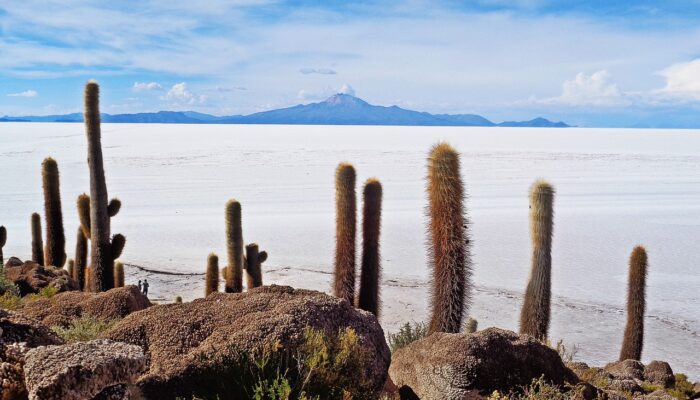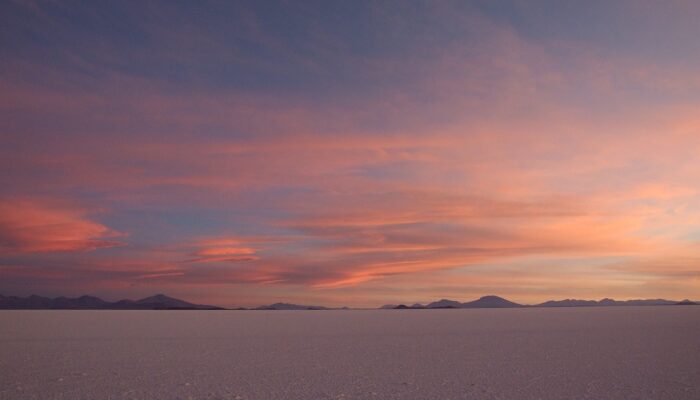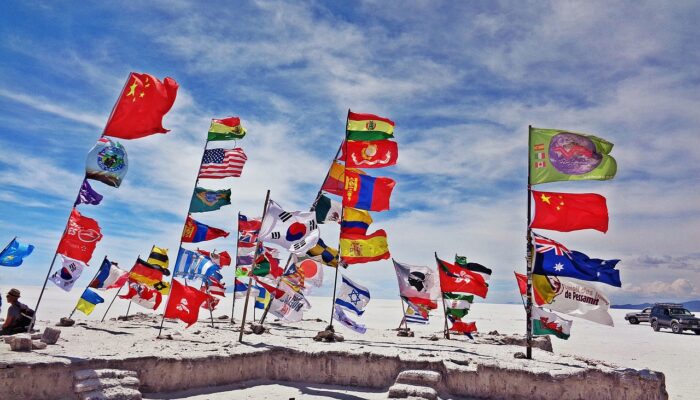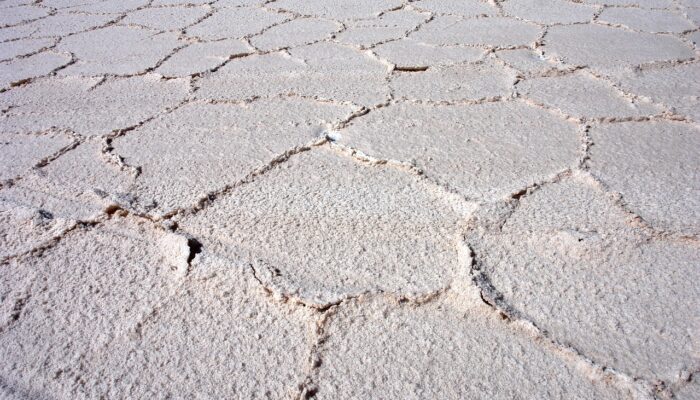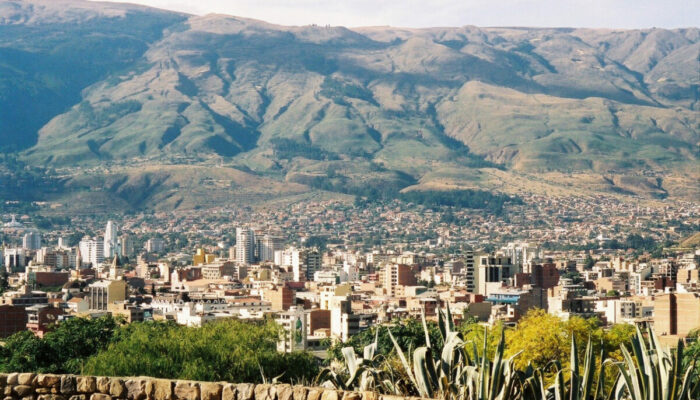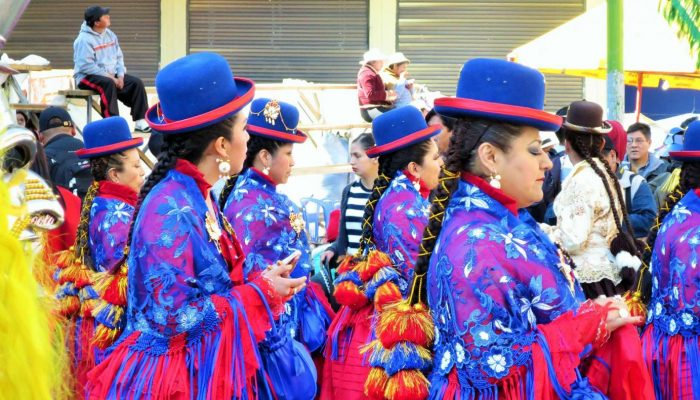Don’t be fooled by its immaculate whiteness, it’s not snow, but it’s in December that we’ve decided to introduce you to the one that needs no introduction: the incredible Salar d’Uyuni in Bolivia!
Temperatures remain cool during this period, but it’s still possible to explore this vast expanse of salt, which is accessible all year round. So grab your cameras! This is the time to take the most unusual shots, but also to capture the giant cacti and salt extraction areas in your sights.
Thaki Voyage knows that it’s not easy to tackle this very popular Bolivian “monument”, so much has been said about it. But we hope that, after reading this article, you’ll already be sitting in our jeep as we head off into a magical and extraordinary world! Hop in, let’s go!
But how was the Salar d'Uyuni formed?
As soon as you arrive, you find yourself at an altitude of 3,653 m, transfixed by the largest salt reserve in the world, stretching over 12,106 km! How do you perceive this sea of salt? If the dazzling white expanse doesn’t match the blue of the Altiplano sky, it means that the Salar has dried up. On the other hand, if the sky is reflected in the ground and clouds appear on the surface, it means that the Salar is full of water.
So how did the Salar of Uyuni come to be? To find out, we need to take a long journey back in time! 40,000 years ago, a very large part of south-west Bolivia was covered by a gigantic lake, Lago Minchín, which, once it had evaporated, remained dry for 14,000 years. Later, a second lake, Lago Tauca, appeared. After 1,000 years, this lake gave way to two bodies of water, Lago Poopó and Uru Uru, as well as two major salt deserts: the Coipasa and Uyuni salt flats!
Scientists believe that minerals from the mountains are responsible for the Salar’s salt deposits, but according to Aymara tradition, the Salar’s formation can only be traced back to the Tunupa legend, Tunupa being the second name given to the Salar of Uyuni. Indeed, the birth of the Salar d’Uyuni is said to have come from the tears of the Tunupa volcano woman, who was unable to console herself when she lost her baby. It was her tears that covered this austere land, giving it its crystalline appearance.
What role does the Salar play in Bolivian society today?
Once you’ve learned about the history of this arid, salty area, the question arises: what place does the Salar currently have at the heart of Bolivia?
Faced with the salt extraction zones, you’ll realise that the Salar is a huge salt extraction centre, producing an estimated 20,000 tonnes of salt a year. Of this, 18,000 tonnes are used for human consumption, while the remaining 2,000 tonnes are used for livestock.
Beneath the surface there are huge deposits of lithium, potassium, magnesium and sodium, and on the surface you will no doubt have noticed hotels built of salt, with furniture also made of salt. Many tourists come here for a unique experience, but setting foot in the Salar is a change of scenery in itself!
Recognised as a must-see site on your visit to Bolivia, this reputation is more than deserved. It’s easy to make the Salar part of your tour, particularly from Tupiza, and discover the south-west of Bolivia! The region is fairly isolated, so you’ll find it easier to rely on an experienced and passionate agency like ours!
Why choose this adventure with Thaki Voyage?
Whether you choose to discover the Salar on an excursion with a small group or make it the destination of your honeymoon, Thaki Voyage promises you an inspiring and immortal holiday, with an exceptional programme!
You’ll get to know the small village of Colchani, a former salt factory, as well as seeing the giant cacti that grow up to twelve metres high. Did you know that they are the only flora that grows in the region? Don’t forget to re-read our November article on Bolivian flora and fauna! What’s more, you’ll also be able to see the salt extraction zones that extend right up to the geysers on the Chilean border.
All the beauty of this landscape requires a camera that will allow you to let your imagination run riot during some of the more than outlandish stagings, as the Salar d’Uyuni is renowned for its unusual shots. What’s more, you won’t forget to immortalise the sumptuous rainbow that takes place when the sun goes down!
As you can see, Thaki Voyage aims to make its trips unique, so that you can experience the authenticity of Bolivia. During your visit to the Salar d’Uyuni, you’ll enjoy the gentle way of life here with us. We’ll be there to advise you, but please note that you’ll need plenty of water, sun cream, sunglasses and a hat to protect you from the sun during the months of June to August. Warm clothing will be useful during the dry season from May to November, and something to cover up will be essential during the rainy season, which lasts from the end of December to March. During this period, the Salar can be covered in water, making it even more enchanting.
Now that you’ve finished reading and dreaming about your trip, we invite you to live it in your dreams! So contact us to organise your stay in Bolivia! The Salar d’Uyuni is a must-see when visiting Bolivia, which is why you’ll find it on most of Thaki Voyage’s tours. This treasure trove of nature is one of the jewels of South America, and you just have to see it for yourself! A magical sensation guaranteed, so when are you coming to see us?

